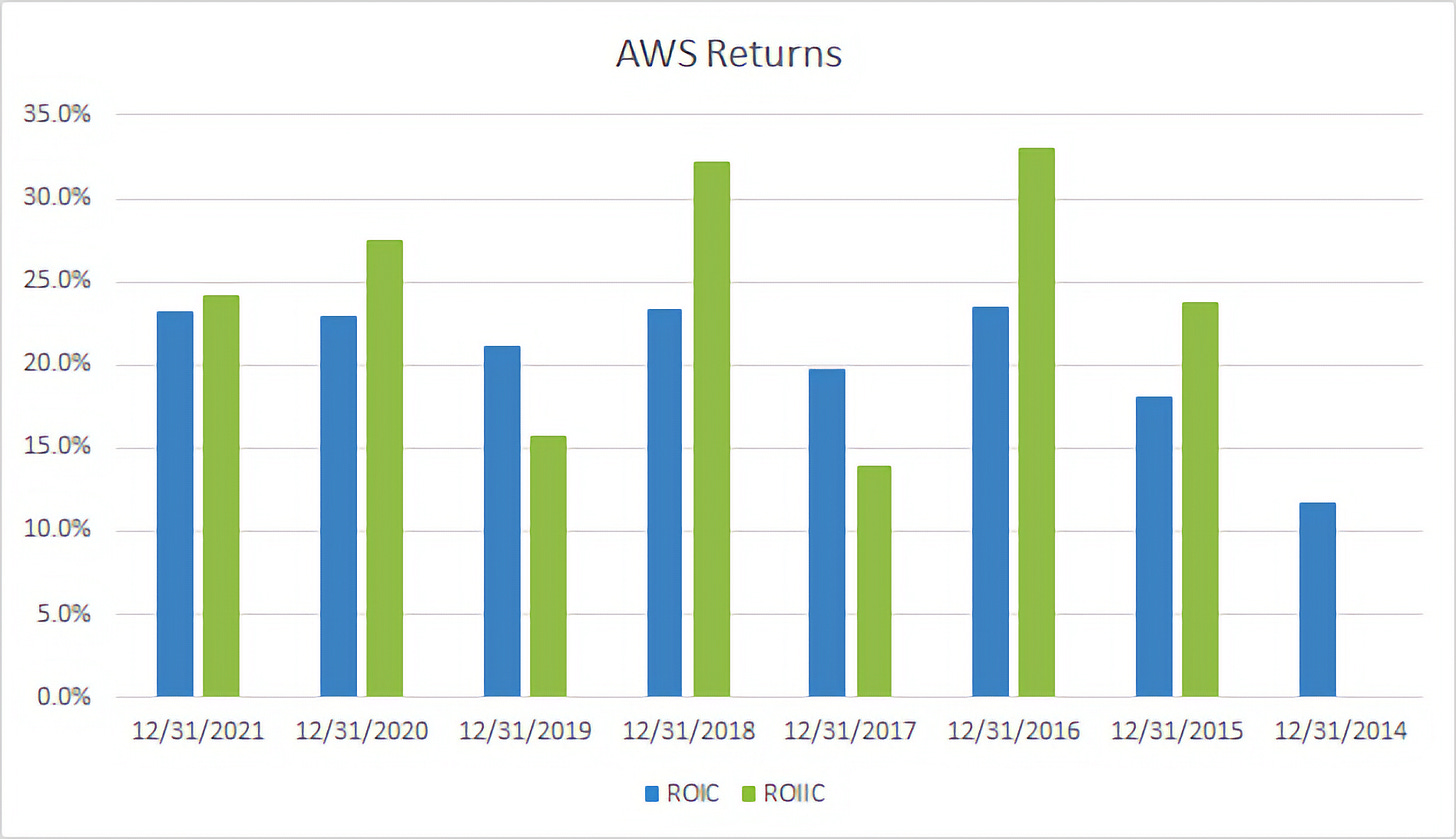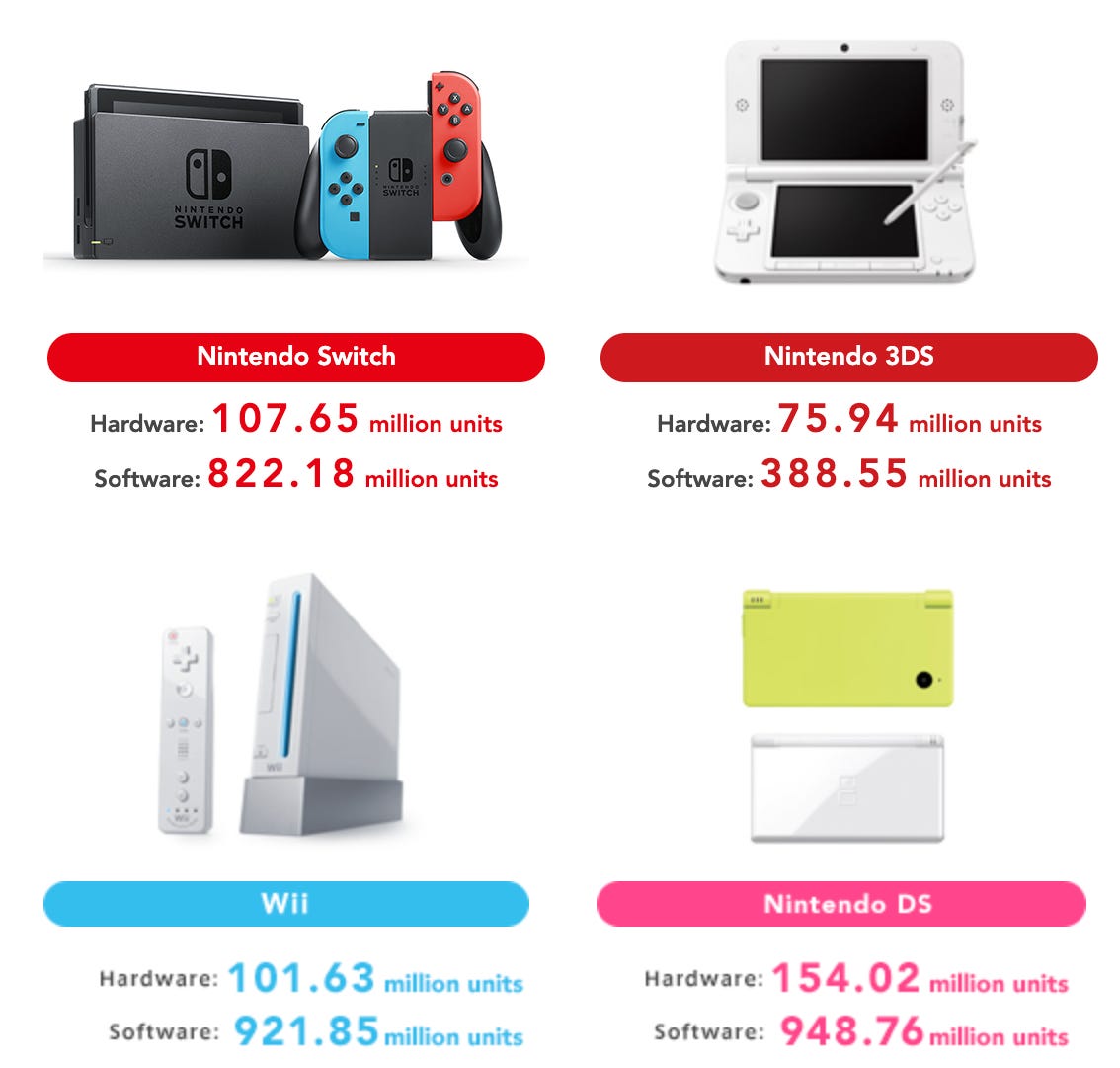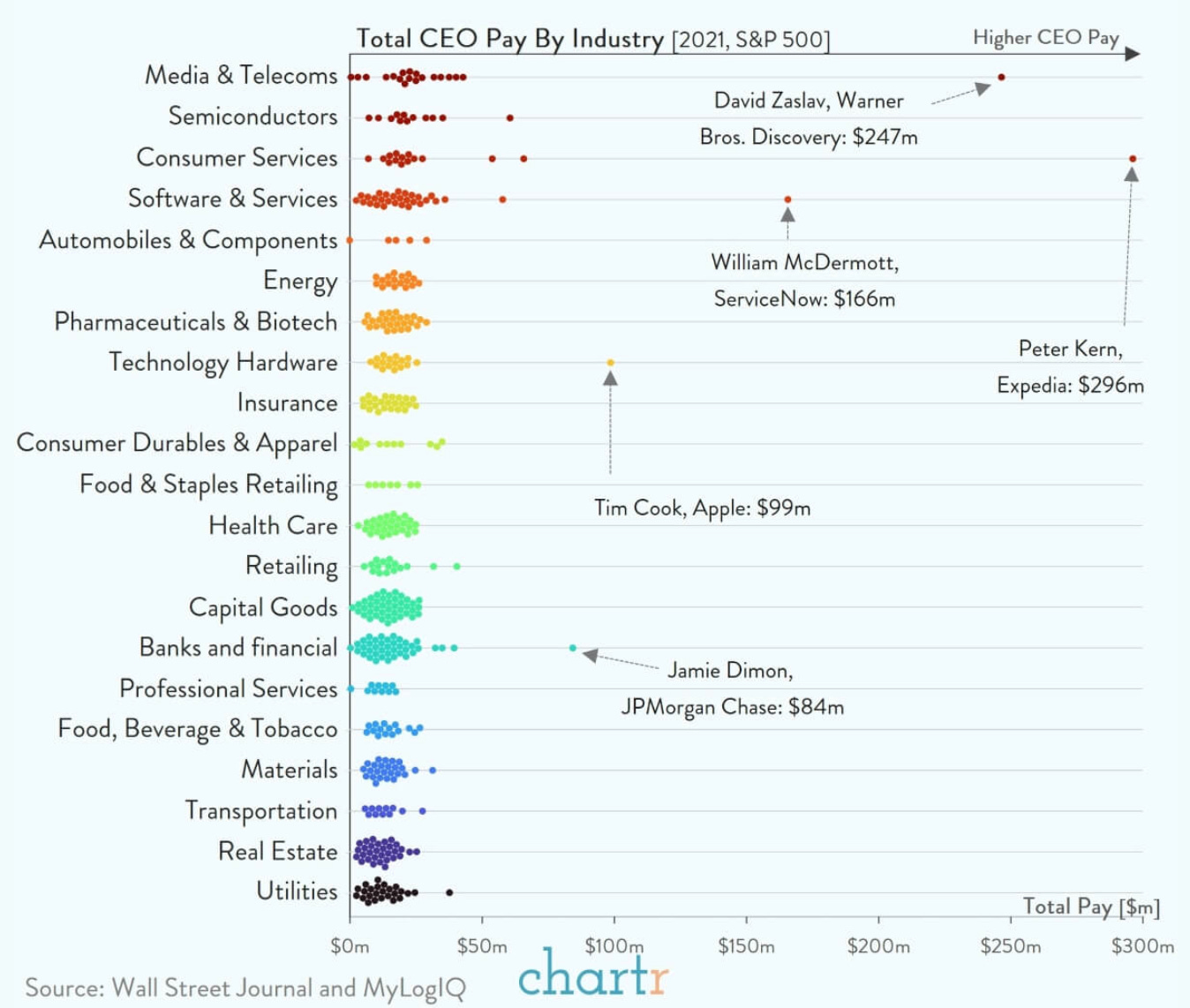282: Amazon, Cloudflare's Meta-Product, Stripe & Databricks, Nintendo, AI-Tailored Media, 1993 AT&T Ad, Google Subsea Fiber, and Video Games as 'Literature'
"A cross between GPT-x + DALL-E-X + the TikTok algorithm"
It is one thing to be clever and another to be wise.
—George R.R. Martin
🛀 So I'm guessing Stripe and DataBricks won't IPO any time soon...
Too bad. I was curious to have a better look under the hood.
💪🧓🏻 👴🏻 🤾♂️ 🏋️♂️ 🚴♀️ 🥳 🧠 I don’t know if it’s an unusual or unpopular opinion — I suspect it’s something most people haven’t thought about — but I don’t believe that people can have had “enough life” and just want it to end without reason. (those last two words are important)
I think people are conflating multiple things when they think about some very very old person going “I’ve had enough, I’m ready to die”; I think when someone gets to that point, it’s likely because life isn’t fun for them anymore, and that’s generally because they’re frail and sick and stuff hurts and they can’t do many things they used to like doing, or their loved ones are gone or also sick and frail and limited in what they can do or their brain is also suffering from senescence.
But let’s imagine together: if you were a 90-year-old with the body and mental acuity of a 30-year-old (same for your loved ones), and you were having a good time living, why would you not want to live one more day? And then the next day if things are the same, why not one more? And so on… 🗓
We tend to think something like “a long time in the future, I will have had enough”, but that’s not how life is lived. I don’t think this hypothetical fully-vigorous-and-healthy-90yo would go “well, it’s been long enough, I wish I could die now”.
It’s lived one day at a time, and if you’re healthy and having fun today, you’ll want to live to see tomorrow.
Rinse and repeat thousands of times... and all else equal I don’t see a reason why this would stop, at least not for multiples of the current human lifespan on average, if such a thing was possible (scientists are working on it, but they should get more resources, and there should be higher incentives to attract people to the field, since the rewards for success would be so enormous for humanity — the diseases of aging cause more indiscriminate suffering than pretty much anything else).
People confuse when life stops being fun — and the diseases of aging are just one of many potential reasons here, mental health is another big vector — with “I’ve had a long enough run”.
Length of time in itself doesn’t get you there by itself if things are going well day to day. That’s what I think, anyway ¯\_(ツ)_/¯
⛹️♀️🏋️♀️ Speaking of mental health, this is a follow-up to the item in edition #281 about the inverse correlation between exercise and depression.
A reader wrote a comment that gave me an idea, but they then deleted the comment, so I’m guessing they changed their mind… But I still like the idea I had:
It seems obvious to me that the causality between exercise and mental health goes in both directions.
People who are depressed will exercise less *and* people who exercise less are more likely to become depressed.
This can create virtuous or vicious cycles in both directions, a bit like with sleep and mental health. Many mental health conditions affect sleep quality, and thus create a negative spiral: bad sleep → worse mental health → bad sleep → etc…
But if you take someone with good mental health and deprive them of sleep, things will sooner or later go wrong in that department.
🪴📸 Nobody asked, but here’s an update on the green onion saga that I told you about in edition #278:
We ate part of it — otherwise, it would be bigger.
💚 🥃 If you’re a new reader, welcome on board! 👋
This place is a bit eclectic, even strange at times, but the #1 goal is to keep it fun and interesting (otherwise I’d just stop doing it, so any other goals wouldn’t matter).
The format is designed to be skimmable, so feel free to look around and see what catches your eye.
Hopefully, you and I have enough overlap in our interests and sense of humor that you also enjoy the trip! 👨✈️🚢⚓️
Investing & Business
Amazon’s Retail & “Other Bets”
For a long time, it was hard to know exactly how profitable Google’s core search was because a lot of other expenses and business units were bundled with it in the financials.
Amazon has kind of the same thing going on with its retail segment, as Modest Proposal (🎩) points out in this thread:
Anyone ever seen Amazon's invested capital split Retail vs AWS?
Here's a swag with IC = NWC + PPE. For years, AMZN retail had ~zero IC b/c of negative working capital. Whether my numbers are close or not it's clear Retail IC exploded the last 3 years w/out commensurate EBIT.
You can look at AWS EBIT / IC and see very healthy returns and incremental returns
You cannot do the same for Amazon retail because IC went from close to zero to $60-80B, while EBIT went from $1B to $6B.
Even if my numbers are way off, directionally it's clear that Amazon Retail went from high ROIC (by virtue of very little IC) to not high ROIC because of lots of IC and not much more EBIT. That's why the multiple has gotten crammed down.
Part of the drag is that "Retail" is a catch all for everything not AWS, eg low earth orbit satellite expenses are in Retail, the 10K+ people working on Alexa, etc. So the true ROIC of "Retail" while clearly depressed by the IC explosion are also depressed by science experiments.
The question for non AWS biz is a) can the true Retail ops grow into the invested capital base, and b) how much are the science experiments burdening EBIT [...]
I've said logistics is the biggest moat in Amazon Retail. I had been documenting attempts to breach it. The question is whether the capital investment of the last 3 years is wasted, or driven an unassailable lead, that they now harvest the benefit of.
It would certainly be interesting to get better disclosure from the company about what is actually retail, and what is in effect R&D and SG&A for non-retail products and services.
🕸 🌏 Cloudflare’s Network as a Meta-Product ⛅️
I’m trying something new. I’ll be posting Cloudflare stuff for many editions in a row (I’ve got enough for 4-5, I think), but in a more bite-sized format, rather than have just one super-long section. Let’s see if that’s a good format.
The most interesting thing about Cloudflare is the architecture of its network.
I’ve written many times about how they are able to build and operate at much lower cost inside ISPs because they save ISPs money, etc.
Here’s another really cool aspect of the network:
we're able to build this network because of the hardware being off the shelf, and the software stack almost runs agnostic to the hardware that is below it. It doesn't matter where the CPU is coming from. It doesn't matter whether it's x86 or whether it's Arm, allows us to drive that
Unlike a lot of the hardware-based networking of the past, Cloudflare’s network is heavily software-defined.
They have all these identical boxes in 270+ locations around the world, and any of their products can run on any server, so they all dynamically allocate their compute, storage, and bandwidth capacity to execute what is asked of them by users in the most efficient way possible, routing workloads and bits to the best location in real-time, keeping utilization high, etc.
Whenever they add new servers to the network, it doesn’t just boost capacity for one product, it boosts capacity or *all of them*. It’s like one big pool of compute/storage/bandwidth that new products can access whenever they need it.
gross margin that is now in the 79% range […] every new product we ship literally comes at almost 0 additional margin dollars from a cost perspective and allows us to aim for a significant long-term operating margin opportunity that we think is well above 20% in the long term.
They have *a lot* of free users, and that may seem like an expensive choice, even if they also get benefits from those users (ie. free beta testers, lots of usage data to train algorithms, etc).
But because of the way their network is built and the fixed vs marginal cost dynamic at play, free users are very low cost:
every packet we process has a different value to us. Morgan Stanley pays us more than Bob's Blog and has a different latency sensitivity that's associated with it. And so a way of understanding this is we have this giant network. We have a whole bunch of free customers, don't pay us anything, right?
And so one of the assumptions is that to service those free customers has cost us a lot. Actually didn't cost us very much because there's always excess capacity somewhere on the network. Oftentimes, it's really close. Oftentimes, we can service that free customer here in New York from a data center that's probably within a few milliseconds of where we are.
But if Morgan Stanley is having an attack or if ProPublica publishes an article that goes viral and we need to make capacity, then it's going to be those free customers that get shoveled off. For the most part, they're still going to have a better experience than they would have without Cloudflare because there's — again, that capacity is everywhere.
But the real key is figuring out the ability to move traffic flexibly around the network to wherever you need it… being able to say this customer is paying us a lot or has an application which is particularly latency-sensitive, so serve that at sort of a high level of service whereas the other customer isn't, and so we're going to -- they're still going to get a great service, but it might be there. [...]
there's always a part of the world that is at sleep, where capacity is idle. And that idleness moves around the clock over 24 hours. So there's always capacity that we can use to offload compute cases that are less latency sensitive because we have idle capacity in parts where the world is at night, for example.
If we invert a bit, this means that if they didn’t have the free users, they’d have a lot of idle capacity that wouldn’t be as productive, and they’d be missing a big self-serve funnel for new customers.
But it doesn’t mean that anyone with idle capacity can start creating a free user tier that easily — if the system wasn’t architected for it from the ground up, you’d probably get a much bigger cost hit because you won’t be able to prioritize and move around packets dynamically as Cloudflare does and your bandwidth and hardware costs won’t be as low (ie. commodity hardware inside ISPs vs renting capacity from hyperscalers).
Nintendo Switch passes Wii in hardware sales (software units getting close too) 🕹
Not bad for a console that came out in 2017 and was already considered ‘underpowered’ at the time…
Console makers typically don't make profit on the hardware, but at this point Nintendo has to have good margins on it, right?
The A.I. Future where media is tailored for an audience of one 📃 ✍️🤖
Friend-of-the-show and Extra-Deluxe supporter (💚💚💚💚💚 🥃 ) Byrne Hobart has a fascinating piece extrapolating AI advances all the way to a possibly-not-so-distant future where sophisticated AI models can spit out all kinds of media tailored just for you:
When we think about media, we're used to thinking about mass media: the shows everyone's watching, the op-ed everyone's talking about, the headlines we all see. The media business has always been fragmented, with local news, topic-focused publications, and niche genres. [...]
As DALL-E recently demonstrated, it's entirely possible to get humanoid outputs from non-human inputs. These are partly just responses to human-generated prompts, but they show a lot more creativity than humans are usually capable of. [...]
If this kind of style transfer gets easier in some creative media, we could see a feedback loop:
Art—or text, or eventually video, and possibly games—gets created based on a series of prompts.
Over time, AI companies that create this kind of media will learn who responds well to which prompt.
As long as people are more responsive to getting exactly what they want than to a particular quality bar, more and more of their content consumption will be bot-generated rather than human-generated.
A cross between GPT-x + DALL-E-X + the TikTok algorithm… 🤖 🤯
The asymptote we reach is that for most people, most of the time, their reading and viewing material is created just for them, based on things they've either voluntarily expressed an interest in or have subconsciously indicated they like. When this applies to entertainment, it's merely strange, but applied to news it's fairly horrifying: will we all get completely fictional narratives crafted around our existing biases? [...]
If this happens, the world will remain multiplayer, but be increasingly designed around a single-player experience.
AI seems to amplify visions of both utopia AND dystopia, at the same time. Such a wide probability distribution of outcomes… 🤔
These digital super-intelligences could cure diseases and design better tools and technologies, help solve environmental problems (by making fusion relatively inexpensive?), etc. Or they could be used by totalitarian regimes to control everyone and everything and poison the well for their adversaries… 💀
CEO Pay in the U.S. by Industry
Source: Chartr
Science & Technology
AT&T ads from 1993, predicting our present
h/t Sam Ro
🏡Looking at Energy Use in US Residential Buildings 🏚
Brian Potter (🛠🧱🏠) of Construction Physics looked at ‘Energy Use in US Residential Buildings’.
For the details check out the whole thing, but here’s the overview:
Modern housing uses substantially less energy than older housing on a per-square-foot basis. A 50-year difference in house age translates to roughly a 50% reduction in energy use. Most of that reduction comes from reduced energy used for heating.
After age, the largest variable that affects home energy use is climate - homes in cold climates use about 30-40% more energy than homes in warm climates, most of which is due to increased heating requirements.
Other than mobile homes, we don’t see a huge amount of variation in energy intensity between different types of housing (single family, multifamily, etc.) On a square-foot basis, single family homes actually use less energy than multifamily housing. Differences in energy use come from the fact that single family homes are much larger than multifamily housing.
Likewise, differences in energy use between the US and European houses stem from the fact that US homes are much larger than European ones.
We don’t seem to find much difference in energy use from across similar homes in states with different level of energy code strictness, though the data here is limited.
Google’s Latest Subsea Fiber Optics Cable
Google created a neat little video about its transcontinental fiber network.
The part about having 80-kilometer-spools of fiber and daisy-chaining them in the lab to try to replicate long-range conditions while testing was pretty cool.
subsea cables carry 99% of international network traffic, and yet we are barely aware that they exist.
What you might not know is that the first subsea cable was deployed in 1858 for telegraph messages between Europe and North America. A message took over 17 hours to deliver, at 2 minutes and 5 seconds per letter by Morse code. Today, a single cable can deliver a whopping 340 Tbps capacity
More details about the technologies involved on this page.
The Arts & History
‘The future of literature is video games’ (gotta admit, that’s a good title!)
Interesting post by Erik Hoel:
it was never their film-like quality that was distinctive about New Golden Age TV (NGATV). Rather, it was their novel-like qualities. The writers of The Sopranos, The Wire, Six Feet Under, Mad Men, etc, were using old techniques to bring literary interiority to television, a thing almost impossible to accomplish in the two hours of a film [...]
“What is it to be “literary?’” you might reasonably ask, as such terms are used in all sorts of ways and often without a consistent definition. So allow me to give one I’ve written about before: to be literary is to take the intrinsic perspective on the world, i.e., to attend closely to conscious states, to orientate your art around them. Film and television are a naturally extrinsic media (which is why, for instance, Kurosawa was a painter), but the genius of the NGATV showrunners was to use clever techniques, like Tony Soprano talking to a therapist, to take the intrinsic perspective on their characters and provide a literary texture to the shows.
Erik claims that something similar has been happening — though at a slower burn — with video games, and gives some pretty intriguing examples that make me wish I had time to play Disco Elysium…
Erik writes:
But it was only recently with Disco Elysium that I first felt an RPG could deliver something equivalent to the best novels. And I’m thinking, perhaps hoping, that it is a signal of a New Golden Age of RPGs, where they start doing artistically risky things instead of just more hack-and-slash escapism, and indeed, in doing so develop the same rich interiority of literature.
Here’s a review of it that gives an idea of what makes it special:








Hi Liberty, I enjoy your tidbits about Cloudflare being very curious about them as well.
few comments,
- From first hand experience, I interviewed with them for a hardware role. They are trying to build their own hardware now similar to what Meta does with OCP. It is interesting to think why would they do that? Maybe to bring costs down?
- Any of your previous article or others article you recommend to read to understand Cloudflare's business in detail?